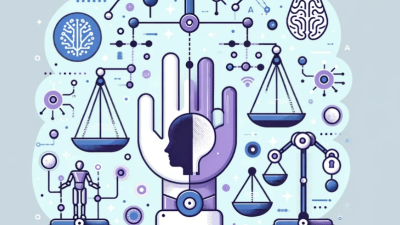The shift toward distributed teams has fundamentally transformed how we conceptualize workplace communities. What once happened naturally through hallway conversations and shared lunch breaks now requires deliberate architecture. Yet the human need for belonging persists regardless of physical proximity.
The Hidden Challenge of Distributed Teams
Remote work brings undeniable benefits—flexibility, global talent access, and reduced commutes. However, beneath these advantages lies a profound challenge: creating genuine community when teammates never share physical space. Without intentional effort, remote environments can quietly erode the social fabric that makes work meaningful.
Many organizations mistakenly believe occasional virtual happy hours suffice for community building. The reality proves more nuanced. True workplace community transcends structured social events to create an environment where people feel professionally and personally connected regardless of location.
Reimagining Water Cooler Culture
The strongest workplace communities develop through a blend of structured and unstructured interactions. In physical offices, spontaneous conversations sparked innovations and relationships. Remote environments must recreate this serendipity through thoughtful design.
Consider implementing digital “collision spaces” where team members naturally encounter each other outside formal meetings. This might include virtual coworking sessions where people work independently but remain available for spontaneous conversation, or dedicated Slack channels for non-work discussions.
According to research from Harvard Business Review, these informal interactions significantly impact innovation and psychological safety. Their studies found that remote teams with regular informal touchpoints reported stronger connection and better collaborative outcomes than those limiting interaction to structured meetings.
The Foundation: Psychological Safety in Virtual Spaces
Building community requires psychological safety—the shared belief that team members can take interpersonal risks without fearing negative consequences. This foundation becomes even more critical in remote settings where visual cues often go missing.
Create structured opportunities for authentic sharing within your distributed team. Begin meetings with thoughtful check-in questions that go beyond superficial updates. Ask about challenges, learning moments, or unexpected discoveries. These practices, when implemented consistently, gradually transform strangers into community.
As explored on our BuildBonding community cultivation framework, psychological safety emerges through repeated experiences of vulnerability met with acceptance. Remote leaders must deliberately engineer these moments since they rarely occur spontaneously in virtual environments.
Rituals That Bind Distributed Teams
Every strong community shares meaningful rituals that reinforce belonging. In remote workplaces, these rituals require thoughtful design rather than evolving organically.
Consider implementing recognition practices where team accomplishments receive consistent celebration. This might involve dedicated time in team meetings to acknowledge contributions, digital recognition platforms, or even physical tokens mailed to recognize significant milestones.
Morning standups, when approached thoughtfully, evolve beyond status updates into community touchpoints. Begin with a moment of presence—perhaps a brief breathing exercise or reflection question—before transitioning to work matters. These small practices establish rhythm and continuity across geographic boundaries.
Bridging Cultural Divides in Global Teams
Remote work often means collaborating across cultural contexts. Strong distributed communities acknowledge and celebrate these differences rather than attempting to homogenize experience.
Create space for cultural exchange within your remote community. This might involve rotating meeting times to accommodate different time zones, celebrating diverse holidays, or implementing “cultural ambassador” roles where team members share aspects of their local context.
According to Buffer’s State of Remote Work, global teams who implement structured cultural exchange report significantly stronger belonging than those who don’t. Their research indicates that understanding teammates’ cultural contexts creates deeper empathy and stronger working relationships.
Technology as Community Architecture
The digital tools you select fundamentally shape your remote community. Rather than adopting platforms based solely on functionality, consider how each technology either enhances or hinders connection.
Evaluate your technology stack through a community lens. Does your video conferencing platform enable breakout rooms for smaller conversations? Do your collaboration tools allow for personality expression through profiles and customization? Does your communication system balance synchronous and asynchronous options to accommodate different work styles?
The strongest remote communities thoughtfully layer technologies to create varied interaction opportunities. They recognize that different community needs—collaboration, celebration, conflict resolution, creative ideation—require different digital environments.
Navigating Conflict Across Distance
Healthy communities don’t avoid conflict—they transform it into growth. Remote environments often complicate conflict resolution by removing nonverbal cues and creating communication delays.
Establish explicit norms for addressing tensions within your distributed team. This might include designated communication channels for sensitive conversations, protocols for expressing concerns, or regular retrospective practices where process improvements receive open discussion.
Remote leaders play crucial roles in modeling constructive conflict engagement. When disagreements emerge, demonstrate curiosity rather than judgment, and prioritize understanding before resolution. These practices create psychological space for honest dialogue despite physical distance.
The Role of Occasional In-Person Connection
While strong remote communities thrive primarily through digital connection, occasional physical gatherings provide irreplaceable value. Consider implementing quarterly or annual team retreats where relationships deepen through shared experience.
Design these gatherings with community-building as their primary objective rather than cramming them with presentations or planning sessions. Create space for both structured team-building and unstructured social time. The connections formed during these in-person moments sustain community during months of virtual collaboration.
Leading Remote Communities Through Transition
Remote work continues evolving, requiring community leaders to navigate ongoing transitions. Whether onboarding new team members, implementing organizational changes, or adapting to shifting work models, remote communities need thoughtful guidance through transformation.
Create robust onboarding experiences that intentionally integrate newcomers into existing community fabric. This might include mentor pairings, structured introduction processes, or gradual exposure to team norms and inside references.
During significant transitions, increase communication frequency and transparency. Remember that information vacuums get filled with speculation in remote environments where casual reassurance doesn’t happen naturally. Regular updates, even when simply acknowledging uncertainty, maintain community trust during change.
The Future of Distributed Community
Remote work continuesto evolve, and with it, our understanding of virtual community building. The organizations that thrive will recognize that strong communities don’t happen accidentally—they emerge through intentional design, consistent nurturing, and adaptive leadership.
By prioritizing authentic connection alongside productivity, you create remote environments where people bring their full selves to work despite physical distance. The resulting community becomes more than a workplace necessity—it transforms into a genuine competitive advantage in attraction, retention, innovation, and resilience.





